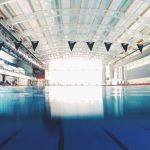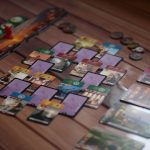Download links
How to install Mastering the Art of Parkour with taya777 APK?
1. Tap the downloaded Mastering the Art of Parkour with taya777 APK file.
2. Touch install.
3. Follow the steps on the screen.
Description
Parkour, often described as the art of movement, is a discipline that emphasizes fluidity, efficiency, and creativity in navigating obstacles.
Parkour is not merely about jumping from one point to another; it embodies a philosophy of overcoming physical and mental barriers, encouraging practitioners to view their surroundings as a playground rather than an impediment.
This perspective fosters a unique relationship between the individual and their environment, transforming urban landscapes into dynamic courses for exploration and expression. The essence of parkour lies in its adaptability. Practitioners, known as traceurs (male) or traceuses (female), utilize their bodies to vault over walls, climb fences, and leap across rooftops, all while maintaining a sense of flow and control.
Unlike traditional sports that often have rigid rules and competitive structures, parkour is inherently personal and self-directed. Each traceur develops their own style, influenced by their physical capabilities, creativity, and the specific challenges presented by their surroundings. This individuality is a core aspect of parkour, allowing for a diverse range of movements and techniques that reflect the unique personality of each practitioner.
Key Takeaways
- Parkour is a physical discipline that involves moving through urban environments using only the human body and the surroundings to propel oneself.
- The basics of parkour include running, jumping, climbing, and balancing, with an emphasis on efficiency and fluidity of movement.
- Training and conditioning for parkour involves developing strength, agility, and flexibility through exercises such as plyometrics, calisthenics, and obstacle course training.
- Overcoming fear and mental blocks is essential in parkour, as practitioners must learn to trust their abilities and make split-second decisions in high-pressure situations.
- Advanced techniques and movements in parkour include precision jumps, wall runs, and flips, requiring a high level of skill and control. Safety and injury prevention are crucial in parkour, with practitioners using proper technique and protective gear to minimize the risk of accidents.
The Basics of Parkour
Fundamental Techniques
The precision jump allows a traceur to land accurately on a narrow surface, while the vault enables them to clear obstacles like railings or walls with ease. Mastery of these foundational skills is essential for anyone looking to progress in parkour, as they form the building blocks for more advanced techniques.
Understanding Body Mechanics
In addition to physical movements, understanding the principles of momentum and body mechanics is crucial in parkour. Practitioners learn to harness their body weight and momentum to execute movements efficiently. For example, when performing a cat leap—a technique where the traceur jumps towards a wall and catches it with their hands—timing and body positioning are vital for a successful landing. This understanding of physics not only enhances performance but also minimizes the risk of injury.
Advanced Techniques and Creativity
As traceurs become more comfortable with these basics, they can begin to experiment with combining movements, creating fluid sequences that showcase their skills and creativity.
Training and Conditioning for Parkour

Training for parkour requires a multifaceted approach that encompasses strength, agility, flexibility, and endurance. A well-rounded conditioning program is essential for developing the physical attributes necessary to perform parkour movements safely and effectively. Strength training is particularly important, as it builds the muscle power needed for explosive movements like jumps and vaults.
Exercises such as squats, lunges, and pull-ups can significantly enhance a traceur’s ability to propel themselves over obstacles. Agility drills are also integral to parkour training. These exercises improve coordination and quickness, allowing practitioners to navigate complex environments with ease.
Ladder drills, cone sprints, and agility hurdles can be incorporated into training routines to develop these skills. Flexibility is another critical component; it not only aids in executing movements but also helps prevent injuries. Stretching routines focusing on the hips, legs, and shoulders can enhance overall mobility, making it easier for traceurs to perform dynamic movements without strain.
Endurance training should not be overlooked either. Parkour often involves sustained physical activity over extended periods, especially during longer sessions or when exploring new environments. Incorporating cardiovascular exercises such as running or cycling can improve stamina, enabling practitioners to maintain their energy levels throughout their training sessions.
By combining strength, agility, flexibility, and endurance training, aspiring traceurs can build a solid foundation that supports their progression in parkour.
Overcoming Fear and Mental Blocks
| Technique | Effectiveness |
|---|---|
| Deep Breathing | 7/10 |
| Positive Affirmations | 8/10 |
| Visualization | 9/10 |
| Progressive Muscle Relaxation | 7/10 |
| Seeking Professional Help | 10/10 |
Fear is an inherent part of learning any new skill, particularly one as physically demanding as parkour. Many practitioners encounter mental blocks that can hinder their progress or prevent them from attempting certain movements altogether. Overcoming these fears requires a combination of mental resilience and strategic approaches to training.
One effective method is gradual exposure; by breaking down complex movements into smaller components, traceurs can build confidence as they master each step before attempting the full movement. Visualization techniques can also play a significant role in overcoming fear. By mentally rehearsing movements before attempting them physically, practitioners can create a sense of familiarity that reduces anxiety.
This technique allows traceurs to envision themselves successfully executing a jump or vault, reinforcing positive outcomes in their minds. Additionally, practicing mindfulness can help manage fear responses during training sessions. By focusing on breathing and staying present in the moment, practitioners can reduce feelings of panic or hesitation when faced with challenging obstacles.
Support from fellow practitioners can be invaluable in overcoming mental barriers as well. Training with others fosters a sense of community and encouragement that can motivate individuals to push past their fears. Sharing experiences and tips within a supportive environment helps build camaraderie among traceurs while providing opportunities for constructive feedback.
This collaborative approach not only enhances skill development but also cultivates a positive mindset that encourages risk-taking and exploration.
Advanced Techniques and Movements
Once practitioners have mastered the basics of parkour, they can begin to explore advanced techniques that showcase their skills and creativity. These movements often require a higher level of strength, precision, and coordination. Techniques such as the kong vault—a dynamic movement where the traceur jumps forward while tucking their knees to clear an obstacle—demonstrate the fluidity and athleticism inherent in parkour.
Mastering such advanced techniques opens up new possibilities for movement and expression within the discipline. Another advanced movement is the wall flip or wall pass, which involves running up a vertical surface before executing a backflip or somersault off it. This technique not only requires significant strength but also demands precise timing and spatial awareness.
Practitioners must be acutely aware of their surroundings to execute these movements safely while maintaining control throughout the process. As traceurs progress further into advanced techniques, they often begin to incorporate elements of creativity into their practice by combining different movements into unique sequences or flows. The exploration of advanced techniques also encourages practitioners to experiment with their environment creatively.
Urban landscapes provide an array of obstacles that can be utilized in innovative ways—such as using railings for slides or benches for precision jumps—allowing traceurs to develop their unique style. This creative exploration fosters an appreciation for the environment while pushing the boundaries of what is possible within parkour.
Safety and Injury Prevention in Parkour

Safety is paramount in parkour training; understanding how to minimize risks is essential for practitioners at all levels. One of the most effective ways to ensure safety is through proper warm-up routines before engaging in any physical activity. Warming up prepares the body for movement by increasing blood flow to muscles and enhancing flexibility.
Dynamic stretches targeting key muscle groups used in parkour—such as legs, hips, and shoulders—can significantly reduce the likelihood of injuries during training sessions. Practitioners should also prioritize learning how to fall safely—a crucial skill in parkour that can prevent serious injuries during practice or when attempting new movements. Techniques such as rolling upon landing help dissipate impact forces while allowing traceurs to maintain momentum when transitioning between movements.
Additionally, wearing appropriate footwear with good grip can enhance stability during jumps and landings while providing necessary support for the feet. Another critical aspect of safety in parkour is recognizing personal limits and knowing when to progress or take a step back. Practitioners should listen to their bodies and avoid pushing themselves beyond their capabilities—especially when attempting new or advanced techniques.
Gradual progression through skill levels allows individuals to build confidence while minimizing injury risks associated with overexertion or improper technique. In conclusion, parkour is an intricate discipline that combines physical prowess with mental resilience and creativity. By understanding its fundamentals, engaging in comprehensive training regimens, overcoming psychological barriers, exploring advanced techniques, and prioritizing safety measures, practitioners can fully embrace the art of movement while enjoying the journey it offers.
If you’re a fan of parkour, you may also be interested in exploring the exciting world of Taya777 online gaming. This article discusses how Taya777 offers a platform for gamers to unleash their skills and immerse themselves in thrilling virtual adventures. Check out the article here to learn more about how Taya777 combines elements of parkour with online gaming for an exhilarating experience.
FAQs
What is parkour?
Parkour is a physical discipline that involves moving through an environment in a creative and efficient way. It often includes running, jumping, climbing, and other movements to overcome obstacles.
Where did parkour originate?
Parkour originated in France in the 1980s, developed by David Belle and his group of friends. It was influenced by military obstacle course training and various martial arts.
What are the benefits of practicing parkour?
Practicing parkour can improve strength, agility, balance, and coordination. It also promotes problem-solving skills and mental focus.
Is parkour dangerous?
Parkour can be dangerous if not practiced with proper training and caution. It involves high-risk movements and should be approached with respect for safety.
Is parkour only for young and fit individuals?
Parkour can be practiced by people of all ages and fitness levels. It can be adapted to individual abilities and is often used as a form of fitness training.
Are there specific techniques or moves in parkour?
Parkour includes a variety of techniques and movements such as vaults, jumps, rolls, and precision landings. These are used to navigate obstacles and terrain efficiently.





